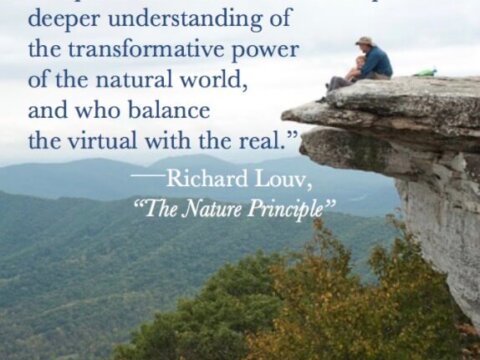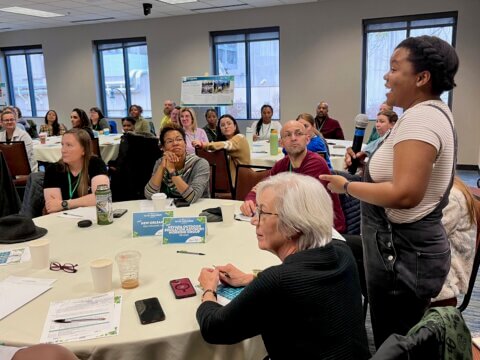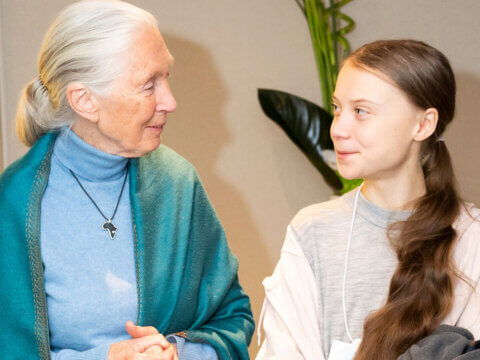TRUSTING IN NATURE: Learnings from a Landscape Architecture Design Studio
Working, learning and teaching in the field of landscape architecture is a wonderful way to be connected to natural systems and the creative process. Being involved with the design of the built environment from a perspective of the landscape for almost 35 years has provided me a tether to the natural world.
But after studying, practicing and teaching nearly continually throughout my career, I decided to take a break from my work. I needed to mind my health, raise my daughter, and address some inner conflict around teaching environmental sustainability while ignoring major breaches to human sustainability. I took advantage of the respite to get back in touch with Nature as well.
Through some significant lifestyle changes, I readily experienced the regenerative power of Nature within the ecology of my whole being and life. My rapport with nature deepened as my awareness grew and sensitivities restored. It became clear to me that our ability to take care of anything, like the Earth, depends upon our ability to take care of ourselves.
I more fully came to realize that human sustainability is ecological sustainability. Thus, when it was time to return to the classroom, I committed to doing things differently— to afford my students the space to care for themselves. I started to hold class outdoors, conduct exercises that emotionally and experientially connect with Nature and each other, and lead the design project collectively in the development of life-affirming guiding principles.

Collective student response to, “What is most important to you, your life, and what you want to create via design?,” WSU, 2018.Photo by, Elizabeth Aine More Graff
From early on, it was apparent that the students were conscientious, dedicated, and appreciative of training in a profession they felt was positively contributing to the world. But I noticed that their energy levels seemed low to start and, as the semester progressed, episodes of illness, anxiety, and personal challenges were significant, reflecting epidemic levels. It was during the site analysis phase of the project, that I realized something deeply disturbing— a real disconnect between the students and natural processes.
The students had been involved in choosing the project after an authentic inquiry into the most pressing needs of our time, best use of the profession, and what inspired them. Of these criteria, user connection to Nature was put forth as a priority. So I was surprised to observe an intuitive unawareness of basic site dynamics, like where the sun rises, sets and the path it takes in the sky. I was not prepared to teach intuitive reading of landscape that is developed by spending significant time outside, most often in childhood.
I had a distinct sense that I was encountering full-fledged nature-deficit disorder of children as young adults.

Neighborhood Design Conceptualization inspired by personal relationship of self and Nature, Jaime Allyn Kemple, WSU, 2018.Photo by, Elizabeth Aine More Graff
As we know, there are many factors that can contribute to nature-deficit disorder– more time indoors, increased use of electronic devices, decreased nutrition, and other less supportive lifestyle choices. In my own students, I noticed an unprecedented reduction in the ability to focus, organize, self-direct, and think creatively, along with increased anxiety, fatigue, cognitive confusion, and absences. When walking around campus, I noticed dorm shades fully drawn on sunny afternoons, indicating compromised psychological benefits from green views and biorhythmic routine. The compounding effect appears exponential and speaks to the very call to action that Richard Louv put forth over a dozen years ago in his seminal writing, Last Child in the Woods.

Drawing Trees as an active meditation to connect energetically with Nature. Sketch by Manufanua Thomas, WSU, 2018.Photo by, Elizabeth Aine More Graff
I decided my approach to my students’ signs of NDD would be to double down—to connect with Nature even more. I would deviate from prevalent performance standards, emphasize self-responsibility, and spontaneously respond to student needs that are typically left out of the classroom such as the importance of sleep and eating well for mental clarity. I slowed down. And we repeated site analysis.
Breaking conventional habits was freeing, welcomed, resisted and opposed. Responses included undulating discomfort, conflict, and chaos, along with gratitude, relief, and understanding. Student resistance included spending time at the project site and making space for focused, undistracted creative flow and design to emerge. They, at times, desperately wanted me to just tell them what to do, while I desperately just wanted them to think for themselves.
There seemed to be a correlation between student capacity to authentically shift, connect, and create to the depth of their personal relationship with Nature. I asked them to set aside concern for grades or what they thought landscape architecture is supposed to be. I wanted them to think of the Earth as a client, recognizing shared energy, and to create from there. Demonstrating that the creative design process is akin to ecological and systems thinking that can be applied to any moment, situation, decision, project and one’s life, was a primary intent. Challenges included unfamiliarity with this self-directed, nature-centered approach and high levels of exhaustion from competing classes. I realized that I was also bringing anxiety to the classroom with unconventional expectations and bolstered myself with the habit of ideologically connecting with examples in Nature that reflect what I am experiencing and finding an expanded understanding of life’s processes.
In this case, I was settled by the notions that storms make way for new growth and that seeds of change may not to be realized for

Understanding natural site dynamics and ecological thinking leads to integrated, life affirming building siting and landscape restoration, hand-drawn sketch by Lukas James Kostka, WSU, 2018.Photo by, Elizabeth Aine More Graff
Affirmingly, the characteristics of energy and potential reconnection to Nature is equally exponential. Once the momentum is going in the direction of creativity, connections can be readily made to a larger picture of sustainability. For example, students approached me regarding improving relationships, upgrading eating habits, and reducing addictive substances, inspired by discussions of the importance of cognitive function to performance and the interconnection of seemingly unrelated vital factors. It came to my attention that students were receiving mentor influence that sleep was overrated and that personal areas of life are not connected to academic achievement. Coincidentally, I witnessed students recognize the interconnectedness of life and make leaps in their understanding and creativity. This is a plea to deeply question the purpose and ways of design, education, and the way we build, live, teach and parent. By realigning with organic processes that encourage responsibility, we care for our planet and our lives. Being in Nature restores balance by witnessing the interrelationship of parts and flow of energy between them—the fundamental basis of ecological thinking, the landscape design process, and creative action.

Connecting with trees as fellow beings is a spontaneous and readily accessible practice.Photo by, Elizabeth Aine More Graff
Intending for a different outcome, I introduced audio files that gave direction to experientially understand natural site dynamics, encouraged outdoor study to secondarily support mental well-being, and required reading of The Hidden Life of Trees by Peter Wohlleben, an excellent book that underscores trees as sentient beings. I saw some changes. In addition to more accurately responding to landscape conditions, the students frequently chose hand drawing, model making and watercolor painting to connect with creative flow before bringing work to the computer. They asked bigger questions about what they were doing and why— enabling them to abandon or recycle an initial idea into a stronger one. They were able to inspire original design concepts and forms from natural phenomena, rather than simply proposing the familiar. Interestingly, the response to an optional tree meditation was received with full attendance and requests to do them more often.
A new fulcrum of balance is needed in the relationships of perception, well-being, and Nature. By questioning the status quo, disruption to the process provides an opportunity to express creative potential. As we experiment with what is possible beyond what we know, resilience increases. Consequently, Nature affords space for reflection, a model of orchestrated parts in constant change, and a connection to the energy of life— the ingredients for restorative, balanced, and creative development of ourselves and the Earth.

Thoughtful suburban neighborhood design proposal celebrating spirit of people, place and Nature, Lukas James Kostka, WSU, 2018.Photo by, Elizabeth Aine More Graff
Despite the uncertainty the semester presented, I felt a deeper appreciation for having grown up “in the woods,” where I innately learned about change, beauty, and creativity. Getting to know ourselves by getting to know Nature is a powerful way to honor the human spirit and life itself. With science currently revealing the regenerative potential of the human brain, it is tremendously encouraging that we can psychologically and physiologically regenerate ourselves via our connection with Nature at any age. But, particular attention to the formative years of development in childhood is essential for foundational health and vitality, for ourselves and the planet. Refilling the interstitial spaces of our full beings (physical, emotional, intellectual and energetic) with that of Nature is the medicine of our time.
12 PRINCIPLES FOR A NATURE-RICH CITY
BRINGING NATURE IN: How Cities are Creating More Space for Nature
BACK TO SCHOOL, FORWARD TO NATURE: Ten Ways Teachers Can Fortify Their Students With Vitamin N
-
Voices
CAMPING WHILE PARENTING: A Mother-Son Adventure
-
Feature
A common thread: Indigenous-led foundation weaves together activism and art, climate and community
-
Network News
Community Spotlight: Prescribe Outside
-
Voices
That’s nice, mija: Finding common language in nature connections
-
Richard Louv
"HUMMINGBIRD PARENTS": Seven Actions Parents Can Take To Reduce Risk And Still Get Their Kids Outside





